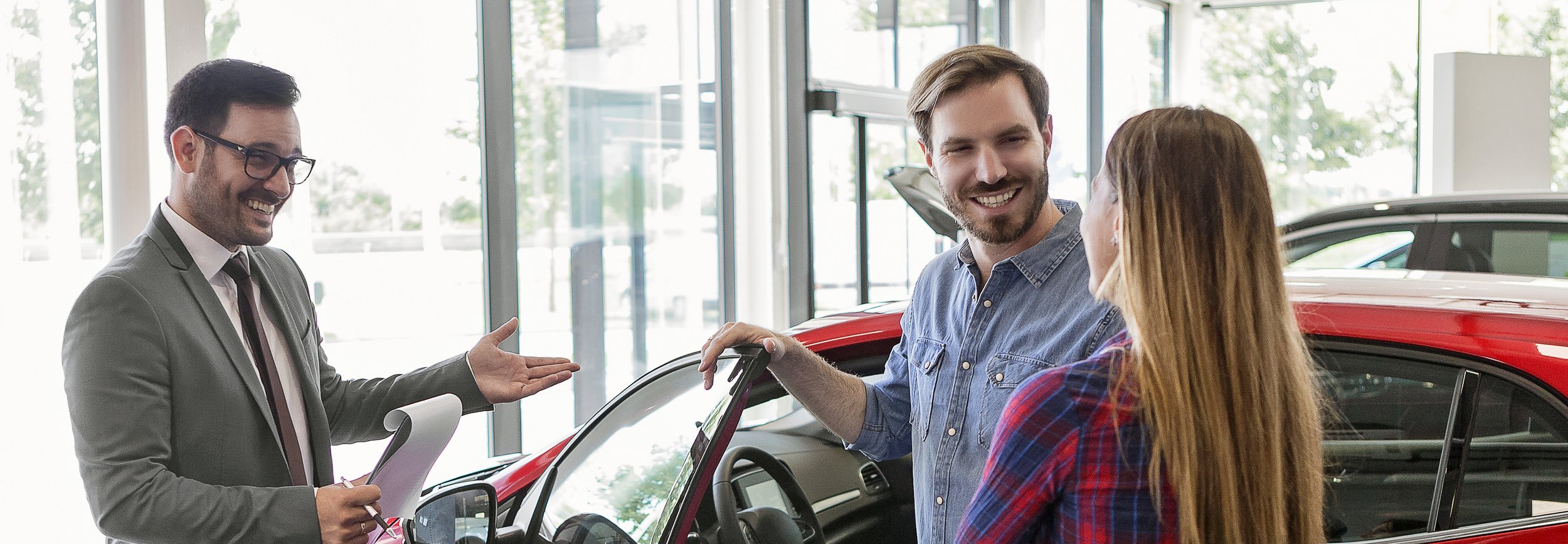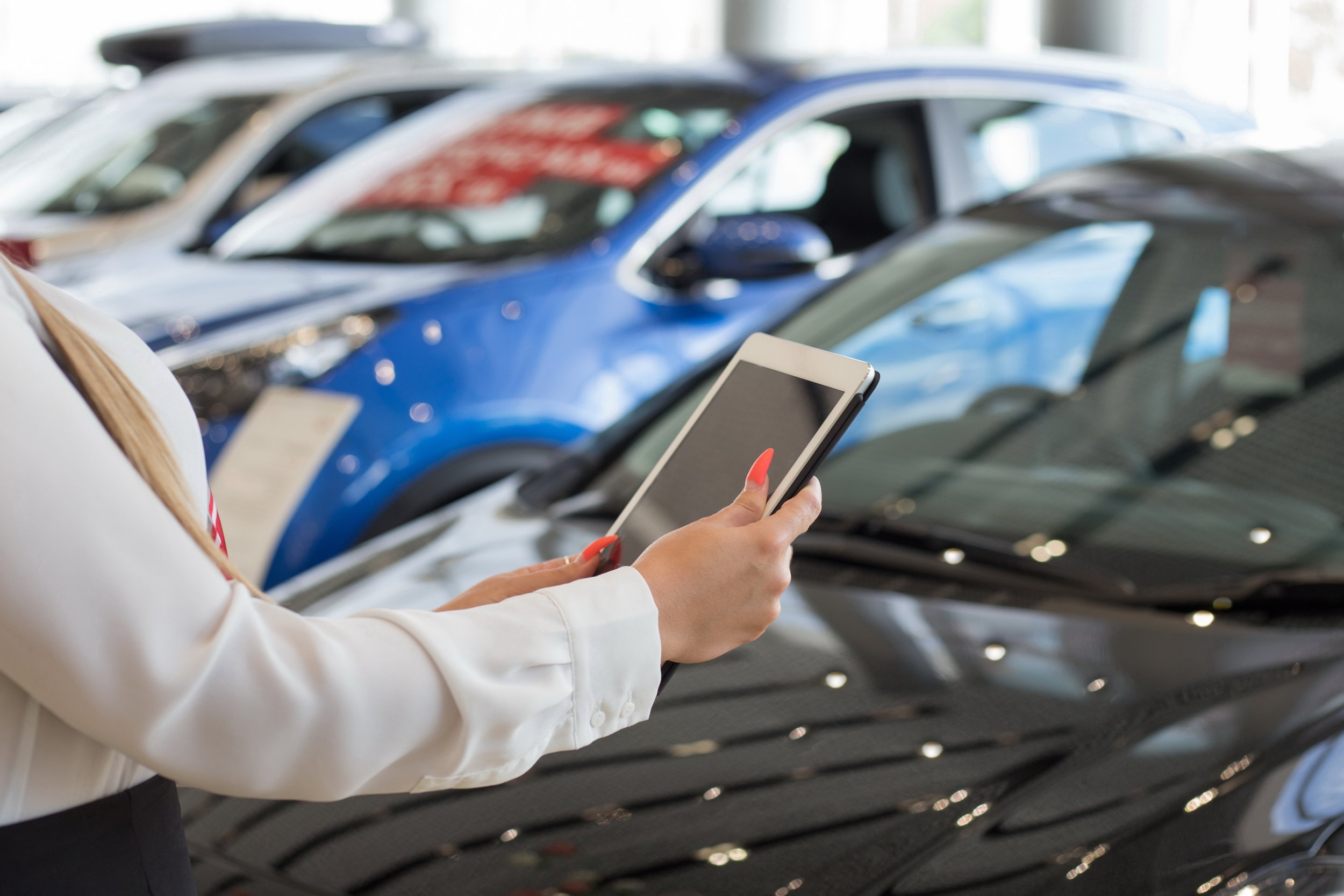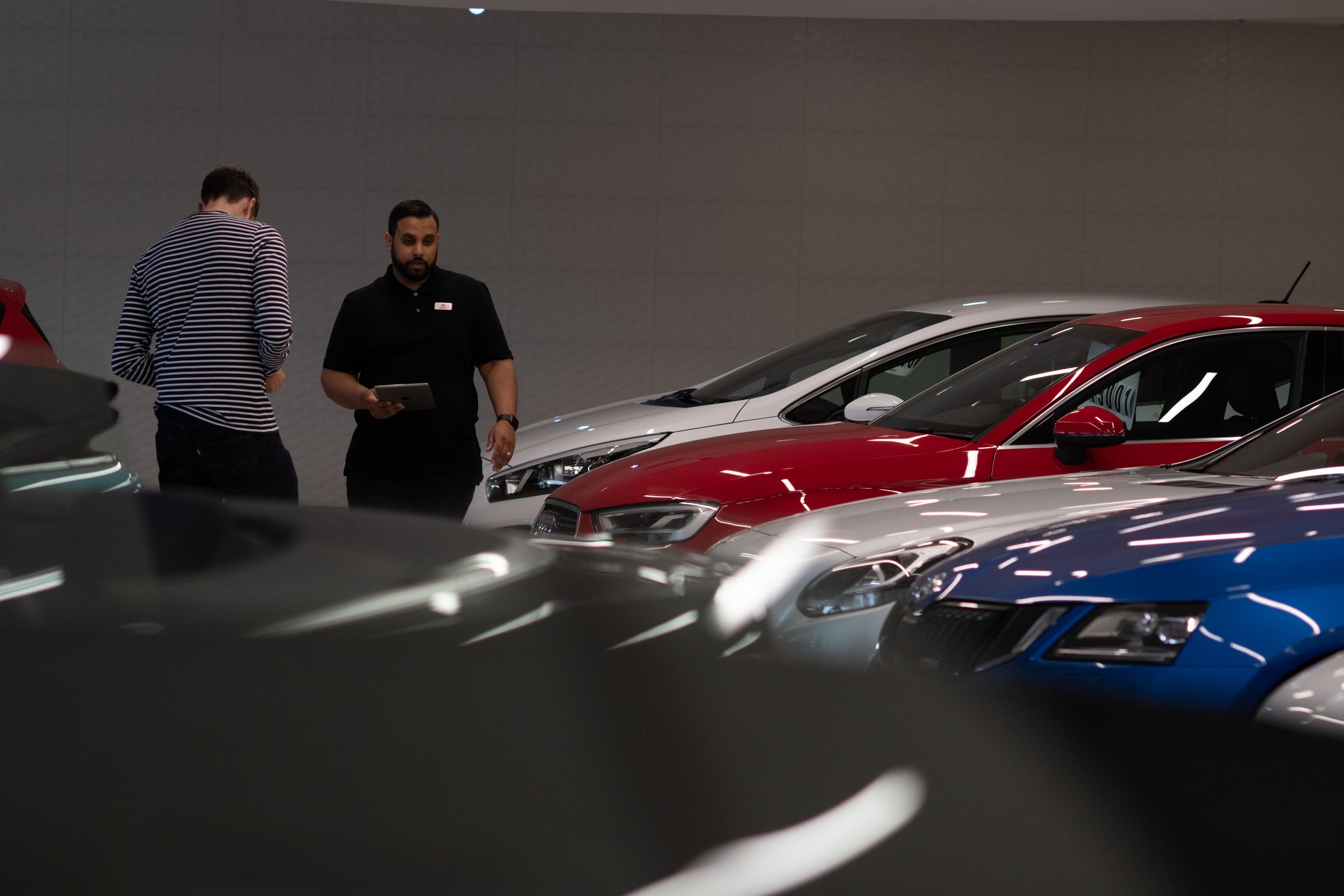
Digital Journeys,
Physical Retailing
How the most successful retailers are unlocking the potential of omnichannel
Despite the turbulence and uncertainty of the last few years, the automotive retail market remains in good health, with recent growth in consumer demand, used car prices, and sales. However, the automotive industry is facing major ‘forces of change’ that are driving retailers to evolve traditional practices.
Using comprehensive consumer research of over 3,000 car buyers, and the findings of a brand-new retailer survey of 227 retail directors and owners representing 1,800 sites, conducted in partnership with ICDP, the National Franchised Dealer’s Association (NFDA), and Auto Trader, this report looks at how evolving car buying behaviour is fuelling demand for a model that supports all aspects of a digital retailing journey, not just the initial research stage.
With additional first-hand insights from some of the UK’s leading retailers, including JCT600, Peter Vardy, Luscombe Motors, Research Garage, and Humphries & Parks, the report aims to answer three key questions:
How is consumer behaviour changing?
How are the most successful retailers responding to the growing consumer demand for greater flexibility, control, and ease through digital?
How are they yielding the greatest rewards from their investments?

The changing consumer
How are consumers changing and what are the roles of the online and offline journey?
Most buyers want to complete the majority of jobs digitally, but few want to do all of them online - the important role of the retailer is clear.
Online is more important than ever. Across retail, online sales have been increasing and the growing traffic to the Auto Trader marketplace reflects the growing ‘digital first’ mindset among car buyers. The first quarter of this year saw circa 238 million cross platform visits to Auto Trader: a 17% increase on 2022. It equates to 31 visits every second by car, van and bike buyers in the UK. In March alone there were circa 83 million visits (+13 million year-on-year), marking the second record of the quarter (80.4 million, January 2023).
Auto Trader research reveals how this trend is having a broader influence on consumer appetites and car buying behaviours. Its findings highlight a broad consumer appeal towards the concept of buying a car completley online, with two thirds of people saying they’d be open to it.
However, in practice, the vast majority of people want a more blended retailing experience. Whilst many people are either already completing some of the necessary ‘jobs’ to purchase a car online or have stated a desire to complete them digitally, they still appreciate and enjoy the in-person experience that only a retailer can offer. This is especially true of the more tangible and tactile elements of car buying, such as inspecting and test driving a car.
This desire for a hybrid journey, which combines both the digital and physical experience of car buying, is further highlighted by the fact that in an Auto Trader study, 94% of car buyers say they research online as part of their car buying journey, whilst 91% also say they visit a dealership.
“I don’t think we’ll ever get to the point where a customer feels 100% confident to buy a car without any human interaction. In terms of feeling 100% confident to buy fully online, I think it’s too much money to spend, with too many moving parts involved."
Sam Luscombe, Group Sales Director, Luscombe Motors
The retailer viewpoint
Listen to leading retailers discuss the changing consumer demands and expectations they’re seeing on their forecourts and why they believe the traditional sales process has to adapt, as well as their differing views on how the digital buying journey has and will continue to evolve.
Having done more online, over half of showroom visitors now expect to buy – a significant recent change in buyer behaviour.
In 2019, 32% of consumers arrived at a forecourt ready to purchase. Today, due to the growing availability of digital services and the ability to complete more of these jobs online, this has risen to more than half. In just three years, the number of people arriving at a dealership ready to buy has increased by two thirds (66%).
“We’re seeing more online tasks being completed by the customer. They’re certainly further on in their journey… on average each customer does three of those [key] jobs prior to turning up.”
Andy Bateman, Director of Customer Experience, JCT600 Ltd.
The retailer viewpoint
Hear how retailers are already seeing more people arrive at their forecourts more informed and further down the buying funnel due to a growing ‘digital first’ mindset
Omnichannel is extending retailers’ appeal beyond their local market and freeing up salespeople.
Buyers that have completed more of the jobs digitally and are arriving at forecourts ready to buy, have typically travelled from further away, and have a specific car in mind. They’ve done more work, are twice as likely to have booked a test drive, and 67% more likely to have checked their preferred car’s availability – they save time on the forecourt and require significantly less help from salespeople during their visit. The potential retailer benefit is clear: improve your customer service and be more efficient in the time spent with different types of potential buyers.
However, before a buyer visits the dealership, and before they even begin assessing the car on the digital forecourt, the consumer needs to find a retailer’s stock. Auto Trader research shows that consumers are ‘car first’ - at the start of the buying process, 36% of people have ‘a few’ makes / models in mind, 31% know the type of car they wanted, and one in five the exact make / model. Just 7% knew which retailer to buy from. Having your stock advertised correctly (good imagery, accurate description, and all the information a consumer needs to make a decision) and where car buyers choose to shop, whether it’s on a marketplace, a retailer’s website, a manufacturer’s website, or in person, is a key foundation for omnichannel and the resulting commercial benefits.
“Omnichannel is the best of both worlds; it gives the retailer and the consumer so much choice throughout the process”
Sam Kingsland-Joy, Sales Director, Humphries & Parks
“A successful omnichannel journey is all about trust and transparency online, so the more images we can add to the car, the more information about optional extras, finance information etc. so that everything is as transparent as it would be in the dealership, but with the convenience of doing it from your sofa – that’s the aim.”
Clair Rogan, Director of Digital Development, Peter Vardy
Consumers want to find a car when they want, how they want, and where they want in a seamless and consistent way across channels. If retailers can support car buyers’ digital journeys, they’ll widen their appeal and unlock efficiency opportunities. If they combine it with a seamless physical buying experience, they’ll also enhance the consumer experience.

Retailers are investing in digital
How are retailers responding to the increased role of digital and what benefits are they seeing as a result?
To understand how retailers are responding to these changes in consumer behaviours, and what benefits they’re yielding as a result, Auto Trader conducted in-depth research in partnership with ICDP, and the NFDA. The survey of 227 retail directors and owners representing 1,800 sites across franchise and independent businesses, provided a unique opportunity to hear directly from retailers on what they believe is working for them, and what’s not.
The findings revealed that the vast majority (90%) of retailers are responding to changing consumer expectations and are now offering a range of digital services, with the most common implemented, being those that help in the early stages of buying a car.
Critically, these retailers are seeing significant consumer engagement, especially for those that support earlier-stage jobs.
Using tools to help research and find the right car see the most consumer engagement, which is reflected in the growth in Auto Trader traffic. However, some of the more complicated and time-consuming jobs are being completed digitally, such as finance quotes and applications.
Critically, these retailers are seeing significant consumer engagement with these services, especially for those that support earlier-stage jobs.
Tools which help consumers research and ultimately, influence their car buying decision, see the most consumer engagement. However, some of the more complicated and time-consuming jobs are also being completed digitally, such as finance quotes and applications. That can help save time and ease the process for both car buyers and retailers alike.
Which digital services are of most value to a retailer?
Around nine in 10 of the retailers surveyed see three key digital services as being of the most value to their businesses: trade-in value (92%), test drive booking (89%), and adding finance quotations (89%).
The more digital services that are implemented, the bigger the benefits.
This consumer engagement is already resulting in perceived benefits for retailers. Those businesses that are further along in their digital journey and offering more digital services are seeing greater benefits. They’re not only improving the customer experience and broadening their consumer appeal beyond their local market, they’re also twice as likely to say they’re saving time on admin compared to those that have implemented fewer digital services.
Retailers with >50% of digital services (% more likely to agree)
Percentage difference in average agree rating between retailers who implement <25% of services vs. those who implemented 50%+ of services
Delivering a seamless omnichannel experience is complex given the same car can be seen at the same time by multiple people in different locations and on different platforms. To make sure it’s seen in a consistent way, with the same price and with accurate, up to the minute information, including whether it’s still available or not, is challenging. It requires technology, data, and partnerships, but getting it right not only ensures that stock is found and trusted by buyers, it also enables significant time savings for retailers.
“People bounce between online and in person, and that transition between the two needs to be really efficient, really straight-forward, and really easy to do. If a consumer is on your website or advert, it needs to be very obvious how they can make their next steps.”
Saber Ali, Alfa Romeo Sales Manager, Research Garage:
This consistency and connectivity between the digital and physical forecourt is critical. Whether online or offline, they serve the same purpose – to sell cars. As more consumers look to transact on specific cars, it’s vital these channels are synced in real-time to ensure the status of all stock is accurately reflected otherwise retailers risk losing credibility, and ultimately, sales.
The retailer viewpoint
Hear first-hand how retailers are implementing more digital services into their businesses to meet changing consumer expectations and to remove pain points, as well as how traditional sales roles are evolving, and the benefits they believe they’re achieving as a result

Operational change unlocks opportunity
How are the most successful retailers making the most of their investment in digital services?
Core operational changes open the full benefit of digital investment. However, retailers said they had implemented less than a third (27%) of the tested operational changes to their business which were presented to them as part of the survey, compared to two thirds (66%) of available digital services – independent retailers believed they have implemented just 17% compared to the 39% by franchise retailers.
The primary operational changes that have been made relate to process or services, such as introducing unaccompanied test drives, changing staff roles, and offering a no quibble’ returns policy.
It’s in reshaping existing roles that the main opportunities lie – by saving time on admin and laborious tasks, retailers can yield greater efficiencies that then provide the opportunity to increase focus on customer facing roles, as well as adding in more data specialists, and more IT positions.
However, only a fifth or fewer of those surveyed have introduced new staff roles, highlighting the opportunity for most retailers.
Which operational changes are of most value to a retailer?
Retailers confirm that the operational changes delivering the highest value apply to those new roles which improve both the consumer experience and business performance: introducing dedicated customer service roles (94%), as well as introducing IT roles (91%), and introducing data analytics roles (95%), both of which can alleviate some of the more unknown and manual tasks salespeople and business managers may otherwise have to complete.
Increased digital services, combined with operational changes, unlocks the biggest opportunities for retailers.
As the research shows, adding more digital services is saving retailers’ time. However, operational changes are required to realise the full benefit of those time savings, by converting it into performance improvements and cost efficiencies. Those retailers who said they’d implemented a higher combination of digital services with operational changes, were 38% more likely to agree they were selling more cars per salesperson than those with a lower combination, whilst 16% were more likely to agree it was helping their business become more efficient.
Consumers using more digital services have:
Retailers more likely to agree compared to retailers who implemented digital services but with minimal operational changes
“I think operational changes alongside digital is key; we can put all the tech and journeys from a digital perspective, but if we’ve not got the buy in from the team with the right processes it’s going to fall down.”
Claire Rogan, Director of Digital Development, Peter Vardy
The retailer viewpoint
Listen to some of the most successful retailers discuss how they’re driving operational efficiencies, improving colleagues' work-life balance and enhancing the customer experience by going the extra mile with their digital strategies.
What this means for retailers…
Digital is transforming the traditional retail model and sales process. Whilst an end-to-end checkout journey might appeal to some car buyers, it’s not the solution for the vast majority of people. It’s clear the future of automotive retail will not only be an omnichannel one, where car buyers can search and shop seamlessly and consistently across whichever platform or location they choose, but also where the consumer can choose where, when, and how to complete the car buying jobs. Where this is in place, consumers have greater control, greater convenience, and a better overall car buying experience, whilst retailers are driving significant efficiencies across their business.
However, as this report shows, that whilst most retailers are adapting to changing consumer behaviours by offering an omnichannel and hybrid retailing experience, the vast majority have only just begun to scratch the surface of its full performance potential.

Summary
In their concluding remarks, retailers offer their thoughts on just how critical an effective omnichannel and hybrid model will be to the future success of automotive retailing, and the risk to businesses failing to adapt to changing car buyer expectations
The retailer viewpoint
“If you can’t even offer the ability for the customer to do things in the order they want to do it, at the time they want to do it, you’re just going to be irrelevant. You’re not even going to be an option, are you?”
Andy Bateman, Director of Customer Experience, JCT600 Ltd
-

Closing remark from Ian Plummer, Commercial Director, Auto Trader
“Retailers can unlock greater reach with the digital products that they’ve embedded and can also yield great benefits to their business in terms of efficiency. Fundamentally, however, it’s the hybrid process, which not only enables the digital journey for consumers, but also offers the physical experience that only a retailer can provide that has the greatest potential. Bringing the two together in a blended and consistent way is good for the car buyer, but it’s vital for the retailer, putting them in the best possible position to benefit from changing consumer needs, and to build their business for future success.”
-

Closing remarks from Sue Robinson, Chief Executive, NFDA
“The Digital Retailing Research report confirms that dealers are adapting well to digitisation and are unlocking the true potential of an omnichannel approach to retail. It is positive to see the data reflect on the high levels of commitment and investment that dealers have put into operational changes to facilitate this transition over the years and these changes ensure customers receive the highest levels of customer service and contributes to the smooth running of a blended sales model.”
-

Closing remarks from Steve Young, Managing Director, ICDP
“We believe that we are moving from digitally enabled retail to digitally driven retail. Having the full range of e-commerce capabilities and all the resources that the customer needs to proceed through their buying journey without leaving your site is the entry ticket to remain in automotive retail in the future. What will make a difference is how well your people interact with the customer as part of their digital journey, and how well you use the huge volumes of data that are generated by both B2C and B2B trade to inform your decisions, and drive your marketing”







